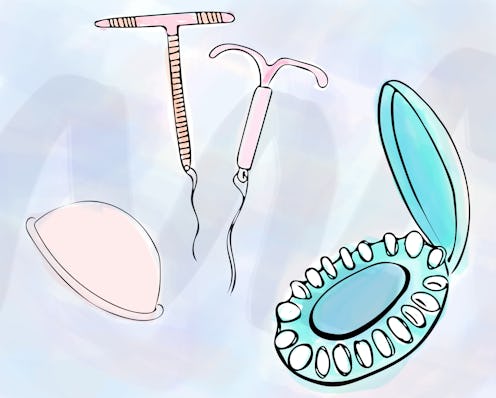News
Free Birth Control Is Great For Teens' Health, Duh

Wait, wait, hold the phone: giving teens free, long-acting birth control reduces pregnancies and abortions? Yes, says the least surprising study ever. When adolescent American girls are given long-acting contraception at no cost, they are far less likely to become impregnated. Why is that (other than the fact that they're being given free birth control)? Because, as the American Academy of Pediatrics recently acknowledged, long-acting IUDs and hormone implants are just more effective than their short-term counterparts.
The study, conducted by the Contraceptive CHOICE Project and published in the New England Journal of Medicine on Thursday, looked specifically at teens in the St. Louis area. What was it looking at, exactly? Whether pregnancy rates amongst sexually active teens would go down if a) teens were given way more information about their birth control options and b) these long-acting contraceptives were offered for free, like in Planned Parenthood's Take Charge program. So for up to three years the study followed 1404 girls, aged between 14 and 19 years, enrolled in the CHOICE program.
What The Study Found
The unbelievably predictable results showed that, uh, yah — when adolescents aren't constrained by money, they'll go for free long-acting birth control. Roughly 72 percent of the teens in the study chose to use implants and IUDs; in contrast, generally only 5 percent of American teens use these long-active methods of birth control. This, of course, reduced the rate of pregnancy and abortion by a staggering amount; over the five years, the pregnancy rate went down by 79 percent, and the abortion rate dropped by 77 percent.
When they compared the study participants to teens across the nation — including teens who were sexually inexperienced as well — the researchers found that the program brought down the abortion rate by 34 percent and the pregnancy rate by 41 percent. This fits with the success of a recent program in Colorado, which saw the teen birth rate drop by 40 percent since 2009, when the state began providing IUDs for very little money to low-income teenage women.
The Biggest Game-Changer
The main reason that the pregnancy rate dropped? Long-acting birth control is just more effective, in part because you're not in charge of a daily upkeep. As chief author Gina Secura of the Washington University School of Medicine in St. Louis told Reuters:
What we saw was that among the teens who started with the shorter-acting methods like the pill or the patch, after a while they started to see they were forgetting to use them. And they then transitioned to a long-acting method.
This might account for the giant contrast in unintended pregnancy rates between implants and short-term contraceptives. Only 0.05 percent of women will get pregnant unintentionally during their first year using a single-rod implant, compared to a whopping 18 percent who use condoms.
Why Are Teens More Likely to Use the Pill and the Patch?
Doctors have been reluctant about offering these long-acting contraceptives for various reasons, one of them being that, for some strange reason, it was just assumed that teens wouldn't go for them. As Secura told Reuters:
For many years, parents, practitioners and policy makers thought, 'Those (long-acting contraception) methods aren't for teens; they're not going to want those methods.' We were able to demonstrate that if they are properly counseled and if they have a choice, they will pick those methods, actually use them, and have really great outcomes as a result.
The reluctance might also have to do with doctors' capabilities. As Secura explains, "Historically, it's been easier for practitioners to write a prescription for pills and have a teen go on her way" because putting in IUDs and other long-acting contraceptives "take more training than some family physicians are used to."
Then There's the Money
As Bustle has previously pointed out, the money needed to get a long-term contraceptive can feel daunting. Costs range from $500 to $1,000. But in actuality, these long-acting solutions are not only more effective birth control, they're more financially effective, too:
You reach cost neutrality within two years with the long-acting methods. But these methods last three, four, five, or six years. So not only are they more effective, they start to regain the financial investment while they're still in use.
In short? Until Vasalgel is readily available, long-acting contraceptives like IUDs and implants are the best options — and they should, obviously, be free.
Images: Cora Foxx/Bustle; Getty Images (4)